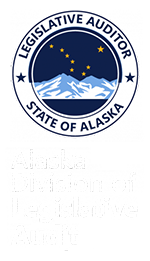| SUMMARY OF: | A Special Report on the Use of Recidivism Rates by State Agencies, Recidivism Rates for the Alcohol Safety Action Program, March 13, 2007 |
Purpose of the Report
In accordance with Title 24 of the Alaska Statutes and a special request by the Legislative Budget and Audit Committee, we have conducted an audit on the recidivism rates of the Alcohol Safety Action Program (ASAP). This audit was part of a larger review of recidivism rates of state rehabilitation programs – Use of Recidivism Rates by State Agencies, Overview of Current Practices (Audit Control No. 06-030035A-07). To facilitate the dissemination of results, the calculation of ASAP recidivism rates are contained in this report..
Scope and Methodology
Recidivism rates were calculated on a sample of offenders with a new ASAP case during FY 02. The professional services of the Urban Institute were used for assistance in designing a sampling plan; designing a database for collection of recidivism information; and statistical expertise in calculating recidivism rates. The Urban Institute’s full report on ASAP recidivism rates, including methodology, can be found as Appendix A.
Report Conclusions
The key recidivism findings are as follows:
- Overall, 52.6 percent of ASAP clients were rearrested for any crime within 42 months of their ASAP judgment date, and 44.2 percent had a new conviction over the same time period.
- Overall, 8.9 percent of ASAP clients were rearrested for an alcohol/drug-related offense within 42 months of their judgment date, and 7.6 percent were convicted of a new alcohol/drug-related offense during the same period of time.
- ASAP clients who completed alcohol and substance abuse education were less likely to be arrested or reconvicted for any crime than those that were never assessed [1].
- ASAP clients that complete treatment were less likely, on average, to be rearrested or reconvicted for any crime than those that were never assessed. However, the difference was not statistically significant.
- ASAP clients with a greater number of prior arrests were more likely to to be rearrested for any crime.
- Older subjects were less likely to recidivate.
- Race and gender were not significantly related to the risk of rearrest after controlling for other factors.
- ASAP clients with greater numbers of prior arrests for person or society offenses or a greater number of prior convictions were more likely to be reconvicted for any crime during the follow-up period.
- ASAP clients with a greater number of prior convictions for offenses against society were less likely to be reconvicted for any crime after controlling for the other effects.
- ASAP clients that completed the substance abuse education were less likely to be rearrested or reconvicted for an alcohol/drug crime than those that were never assessed.
- White ASAP clients were less likely to be rearrested or reconvicted for an alcohol/drug crime than clients from the “Other” race category (i.e. Black, Hispanic).
- Older ASAP clients were more likely to be rearrested or reconvicted for an alcohol/drug related crime.
- ASAP clients with a greater number of prior crimes against society were more likely to be rearrested for a new alcohol/drug crime.
- For those individuals that completed ASAP (education or treatment), the hazard rates [2], measured after completion, were not significantly different than the hazard rates measured after judgment. This indicates that impact of the program is realized immediately upon entering the program rather than upon completion of the program.
- Survival times for clients that did not complete treatment or did not complete education were similar to the survival times for those never assessed.
Footnotes
[1] “Never assessed” means that a person was court-ordered into the program but never showed up at the ASAP office for an assessment.
[2] Hazard rate is the instantaneous rate of failure.

